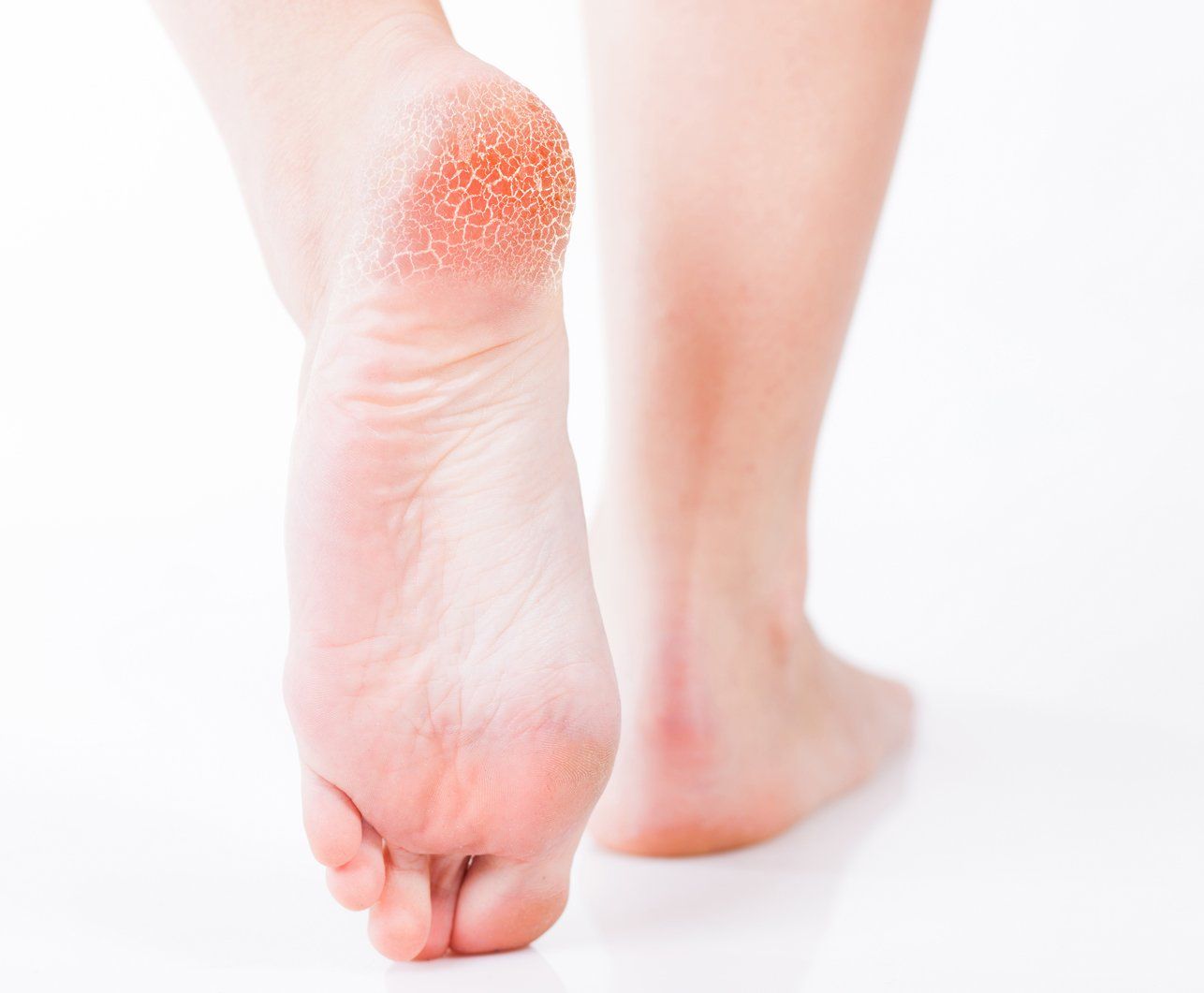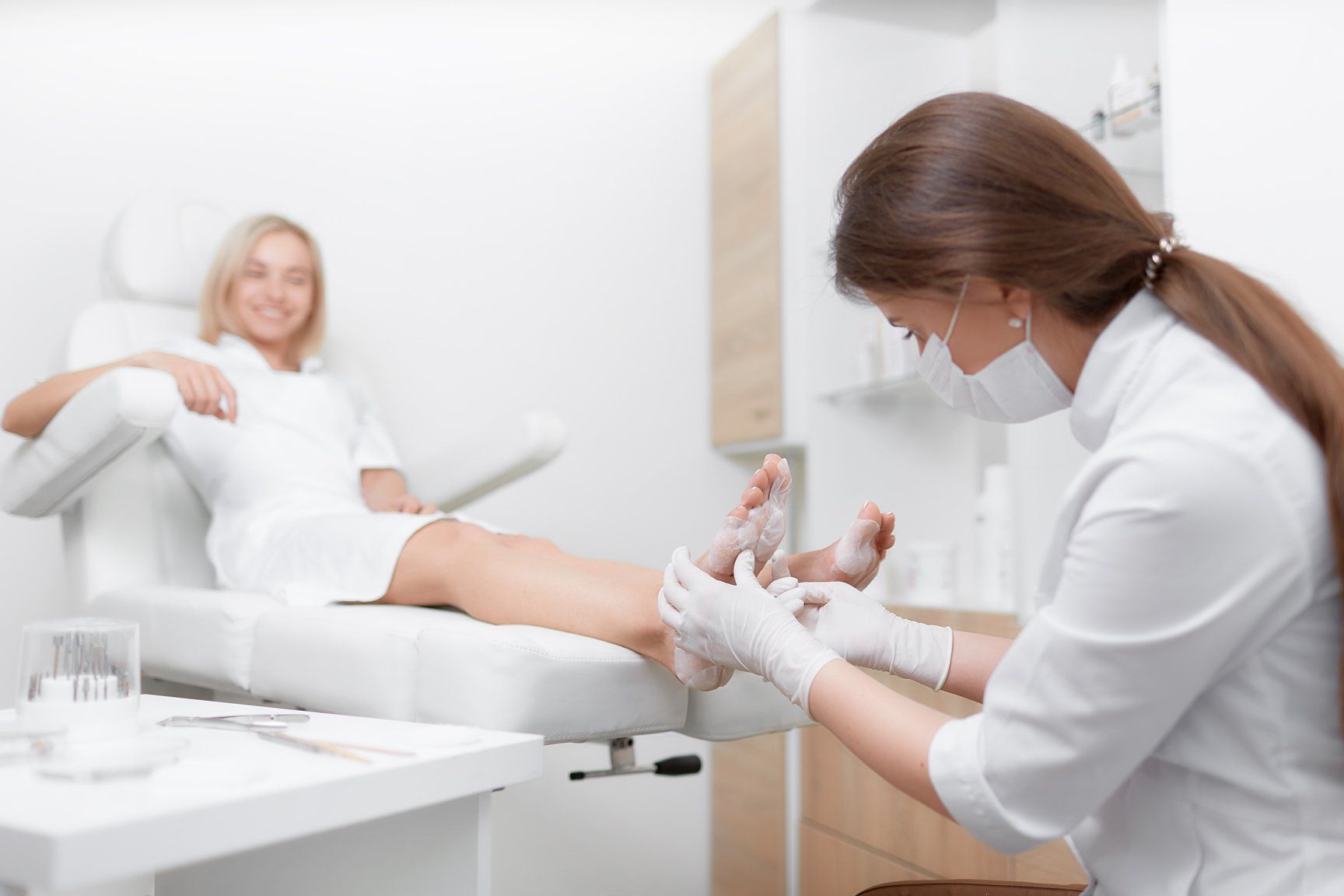Athletes Foot
Athlete’s foot is a skin fungal infection. It can lead to intense itching, cracked, blistered or peeling areas of skin, redness and scaling. It can occur on moist, waterlogged skin usually between the fourth and fifth toes initially, or on dry, flaky skin around the heels or elsewhere on the foot. Large painful fissures can also develop and the condition can also spread along all five toes and sometimes to the soles of the feet if left untreated.
It’s caused by a number of fungal species which you can pick up from someone else shedding affected skin (typically in communal areas such as pools, showers and changing rooms) or where you may walk around barefoot. Athlete’s foot can also be passed on directly from person to person contact, although people who sweat more are much more prone to infection.
What is it? / How do I know I have it?
Athlete’s foot is a skin fungal infection. It can lead to intense itching, cracked, blistered or peeling areas of skin, redness and scaling. It can occur on moist, waterlogged skin usually between the fourth and fifth toes initially, or on dry, flaky skin around the heels or elsewhere on the foot. Large painful fissures can also develop and the condition can also spread along all five toes and sometimes to the soles of the feet if left untreated.
What causes the problem?
It’s caused by a number of fungal species which you can pick up from someone else shedding affected skin (typically in communal areas such as pools, showers and changing rooms) or where you may walk around barefoot. Athlete’s foot can also be passed on directly from person to person contact, although people who sweat more are much more prone to infection.
Once your feet have been contaminated, the warm, dark and sweaty environment of feet cramped in shoes or trainers provides the ideal breeding ground for the fungus. However, athlete’s foot also occurs in dry, flaky areas. It’s quite common in summer with sandal wearers. The sun makes your skin dry out so it loses its natural protective oils. This combined with the constant trauma from sandals makes them more prone to infection.
Is it serious?
If left untreated, the fungus can spread to the toe nails causing thickening and yellowing of the nail which is much harder to treat. Fungal infections are highly
contagious and can spread to anywhere on your skin – including your scalp, hands and even your groin. This is especially likely if you use the same towel for your feet as for the rest of your body. It is always best to treat this condition as soon as symptoms are first noticed.
Who gets it?
It’s not called athlete’s foot for nothing! It’s a fairly common condition and walking barefoot around swimming pools and spending your life in trainers may make you more likely to suffer, but obviously you do not need to be an athlete to suffer from this condition.
How do I prevent it?
The single most important tip for preventing athlete’s foot is to ensure your feet are completely dry after washing them and before you then put your shoes and socks on. However, there are many things you can do to make your feet less hospitable to fungal infections.
Firstly, change your footwear on a regular basis. There’s no point sorting your feet out if you constantly re-infect them by putting them into damp, fungally-infected shoes. It takes 24-48 hours for shoes to dry out properly, so alternate your shoes daily.
If you really have to wear the same pair day after day (say, if you’re on holiday), dry them out by using the hairdryer on a cold setting and this will get rid of the perspiration quickly without creating more heat. To help shoes dry out more quickly, take any insoles out. Also, loosen any laces and open your shoes out fully so that air can circulate. Choose trainers with ventilation holes.
If your shoes are so tight that they squeeze your toes together, this encourages moisture to gather between your toes and encourages fungus. Let air circulate between the toes by going for a wider, deeper toebox instead and choose shoes made from natural materials. Of course, you should also be changing your socks daily.
Wear flip-flops in the bathroom and in public showers. This will not only ensure that you don’t leave your dead skin around for others to pick up, but will stop you picking up other species of fungus. Also, never wear anyone else’s shoes, trainers or slippers.
What are the treatments?
Treatments depend on what type of Athlete’s foot you have.
For athlete’s foot where the skin conditions are dry: if the condition occurs on a dry area such as your heel, you need to restore moisture by rubbing in an anti-fungal cream or spray, sometimes combined with a steroid cream (all from your pharmacist). You must remember to wash your hands thoroughly afterwards, or use disposable gloves so you don’t get the fungus on your hands at all.
For athlete’s foot where the skin conditions are moist: this condition requires an altogether different type of treatment to that above. Wash your feet in as cold water as you can bear (as hot water only makes your feet fungus-friendly) then dry them thoroughly after washing, preferably with a separate towel or even kitchen roll. It is important to dab your feet dry rather than rub them, as rubbing tends to take away any healing skin. Although the skin may appear flaky and dry, never use moisturiser between your toes, also avoid powders as they can cake up and irritate skin. A spirit-based preparation can help such as surgical spirit (it’s cooling, soothing and antiseptic). This may sting a little but will evaporate the moisture and allow the skin to heal.
In severe cases, sometimes an anti-fungal tablet is prescribed. However, tablets are not suitable for everyone eg. pregnant women so always check with your pharmacist and follow the instructions carefully.
You should also avoid using anti-fungal powders between the toes, they’re good for dusting inside shoes and trainers.
The mistake most people make is to stop the hygiene regime, shoe rotation and/or medication once their symptoms have gone. Although symptoms may disappear after several days or weeks of treatment, the fungus can lie dormant and could eventually reappear if the environment is right. Some products require continued treatment for many weeks – always follow the instructions. Also, be alert to symptoms so that you can deal with any problems straight away.












